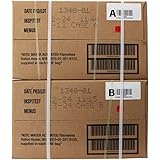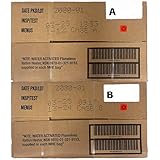Understanding Water Contaminants
Types of Contaminants
When I first started learning about water purification, I was surprised by the number of contaminants that could be lurking in my tap water. From bacteria to chemicals, understanding what types of contaminants exist is crucial. There are biological contaminants, like viruses and bacteria, which can cause all sorts of illness if ingested. Then you’ve got chemical contaminants, which can come from agricultural runoff or industrial processes. It’s a bit of a wake-up call to realize your water might not be as clean as you thought!
The third major category are physical contaminants. Things like dirt, sand, or larger particles can muddy your water and affect its taste and appearance. Getting familiar with these isn’t just for the scientists; this knowledge empowers you to make decisions about your water purification needs.
Lastly, let’s not forget heavy metals. Lead, mercury, and arsenic can sometimes seep into water supplies, often from old pipes or industrial waste. It’s definitely scary stuff, but understanding is the first step towards safe drinking water.
Sources of Contaminants
Once I had a grasp on type of contaminants, the next eye-opener was figuring out where they come from. One major source is agriculture, believe it or not. Pesticides and fertilizers often wash into water supplies after rain, leading to chemical pollution. I remember walking in my neighborhood and thinking about the nearby farms – it really made me consider how interconnected our ecosystem is!
Pollution from industries is another culprit. Factories sometimes discharge waste directly into rivers or lakes, which can lead to heavy metal contamination. As someone who cares about the environment, I found it disheartening, but awareness pushes me to make better water choices.
Then there are issues in our own homes. Old plumbing can leach metals into the drinking water. I learned this the hard way when I had an old faucet that I thought was safe until I got my water tested. It’s a good reminder that sometimes, the danger is closer than we think!
How to Identify Contaminants
Okay, so now that we recognize the types and sources of contaminants, how do we figure out what’s actually in our water? First, I highly recommend testing kits. You can find them in most home improvement stores. They usually test for a range of contaminants including pH levels, lead, and bacteria.
If you’re a little more serious about it, consider hiring a professional. They can do comprehensive tests that put your home kit to shame! I splurged a tiny bit on this, and it gave me such peace of mind to know exactly what I was dealing with.
== > What if ... Get a FREE Subscription to PREPARE
Lastly, always check your local water quality reports. They tell you what’s in your water and how it ranks against safety standards. It’s surprising how much information is out there if you just look for it!
Choosing the Right Purification Method
Types of Purification Systems
After diving deep into what’s lurking in our water, the next big question is: how do we purify it? There are a variety of systems available, and I suggest you start with what kind fits your needs best. For instance, reverse osmosis systems are fantastic for getting rid of a wide range of contaminants, from lead to bacteria. They can be a little pricey upfront but trust me, worth it!
If you’re looking for something less permanent, water filters might be your best bet. You can get pitcher filters or attachable filters for your faucet. They’re convenient and great for folks on-the-go like me. Remember to check what specifically they filter out, though!
And then there are UV purifiers, which kill germs without chemicals. I was thrilled to discover these when I started learning about water treatment. It’s like the science nerd in me was dancing — no chemicals needed to stay safe!
Cost Considerations
When considering purification methods, let’s take a look at pricing. Home setups vary widely; I found some decent systems for around $50, while advanced systems can run into the hundreds. Honestly, I had to budget a little to make it work, but I felt it was worth investing in my health.
Don’t forget about maintenance costs, though! Filters need to be changed regularly, and some systems might require professional servicing. Keeping track of these costs can help avoid surprises later—a lesson I’ve learned the hard way.
Also, think about long-term vs. short-term expenses. Occasionally, spending a little more upfront can save you money in the long run. I’ve also found that a clean water supply can save money on bottled water — so it all balances out!
Effectiveness of Methods
Not every purification method is created equal; some are better suited for different contaminants. In my journey, I observed that reverse osmosis systems can remove a staggering percentage of impurities, which makes them an effective choice if you’re dealing with severe contamination.
On the other hand, activated carbon filters are great for improving taste and reducing some chemicals but are not as reliable against heavy metals. Knowing your needs will help you make the best choice.
Don’t forget to routinely test your water even after installation. It’s essential to ensure that the purification method you’ve chosen is still doing its job. Consistency is key—this isn’t set-it-and-forget-it territory!
Implementing Your Water Purification System
Site and Setup
When I set up my water purification system, I quickly realized that location matters. Some systems require more space than others, while others need to be close to a power source or water line. Early on, I scouted out spots that wouldn’t be disruptive to my kitchen setup.
I also had to consider accessibility. You want an area that’s easy to reach for maintenance purposes. I made the mistake of tucking my first filter away under the sink, and getting it out was a hassle. Trust me, having easy access saves a ton of frustration!
Lastly, it’s essential to read the installation guides—don’t skip this part! I learned this lesson after attempting to install a filter without fully understanding how it worked. A little patience goes a long way.
Get Preparedness and Self-Reliance Tips. Subscribe Now!
Maintenance Routine
Keeping your system running smoothly involves a good maintenance routine. Change your filters according to the manufacturer’s guidelines; ignoring this is a rookie mistake I made at first. Old filters can do more harm than good and can actually release contaminants back into the water!
Besides filter replacement, it’s wise to periodically check your system for leaks or wear and tear. I set reminders on my phone for maintenance checks, which makes the process a whole lot easier.
And remember, testing your water post-setup is a must! I make it a habit to re-test every six months just to ensure everything is running as it should. It’s a great way to catch any issues early.
Putting it All Together
Finally, after understanding contaminants and selecting a purification method, it’s all about making it work together. Invest time into understanding how your system operates with your water source. If things aren’t functioning as expected, don’t hesitate to reach out for tech support or consult online forums. You’re never alone in this journey!
Consider sharing your experiences, as well! By discussing with friends or local community groups, you can swap product recommendations and tips. This can lead to discovering newer, potentially better solutions.
After implementing everything I’ve learned, I feel a lot more confident about drinking water. It’s an empowering journey, and I’m all about sharing that knowledge with anyone who wants it!
Health Benefits of Purified Water
Physical Health
It’s pretty amazing how the right water can really boost your physical health. Drinking purified water means you’re consuming fewer contaminants, which can reduce the risk of illnesses. I mean, who doesn’t want to avoid that dreaded stomach bug, right?
By staying adequately hydrated, I’ve noticed improved energy levels. It’s super important, especially when you’re busy (which I totally am!). Proper hydration helps with everything from concentration to skin health.
Not to mention, there’s the purity aspect. Knowing that I’m drinking water free from excess chemicals puts my mind at ease. Truly, you don’t know the value of clean water until you’ve experienced it.
Mental Clarity
On top of the physical benefits, purified water can also play a major role in mental clarity. Staying hydrated enhances cognitive function, which is crucial for keeping sharp, especially with all the tasks I tackle daily. I can tell a noticeable difference when I’m sticking to my hydration routine.
Also, understanding what goes into your body has psychological benefits. I feel more in control and aware of my choices, which brings a certain peace of mind. That sense of control is pretty powerful and can reduce anxiety overall.
In short, investing in a good water purification system has a positive ripple effect on my mental well-being. It’s all about that holistic health approach!
Environmental Impact
Lastly, let’s chat about the environmental impact. Using a water purification system means I’m reducing my reliance on plastic bottles, which is fantastic for the planet. Seriously, it’s wild how efficient one simple choice can be for the environment!
Also, by choosing more sustainable purification methods, I’m contributing less to chemical runoff and other forms of pollution. It’s kind of cool to think that my water choice is making a difference, even on a small scale.
So there you have it! By choosing to purify my water, I feel like I’m making healthier choices for myself and my planet. It’s a win-win, and honestly, I’d encourage everyone to take that leap!
FAQ
What contaminants should I be concerned about in my water?
It’s important to be aware of biological contaminants like bacteria and viruses, chemical contaminants such as pesticides and heavy metals, and physical contaminants like dirt or sand. Regular water testing can identify what’s in your water.
What purification method is best for my needs?
The best method depends on the contaminants present. Reverse osmosis is great for heavy metals, while activated carbon filters excel at improving taste and reducing chemicals. Assess your specific needs to select the most effective option.
How often should I change filters in my purification system?
Filter replacement frequency varies by system, so always refer to the manufacturer’s guidelines. Generally, I recommend changing them every 3 to 6 months to keep your water quality up to par.
Can I test my water myself, or do I need professional help?
Many home testing kits are available for basic contaminants. However, for a more comprehensive analysis, hiring professionals can provide deeper insight into your water quality.
Is purified water really better for my health?
Yes! Purified water significantly reduces your exposure to contaminants, which can improve your physical and mental well-being. Staying well-hydrated with clean water plays a key role in overall health!






